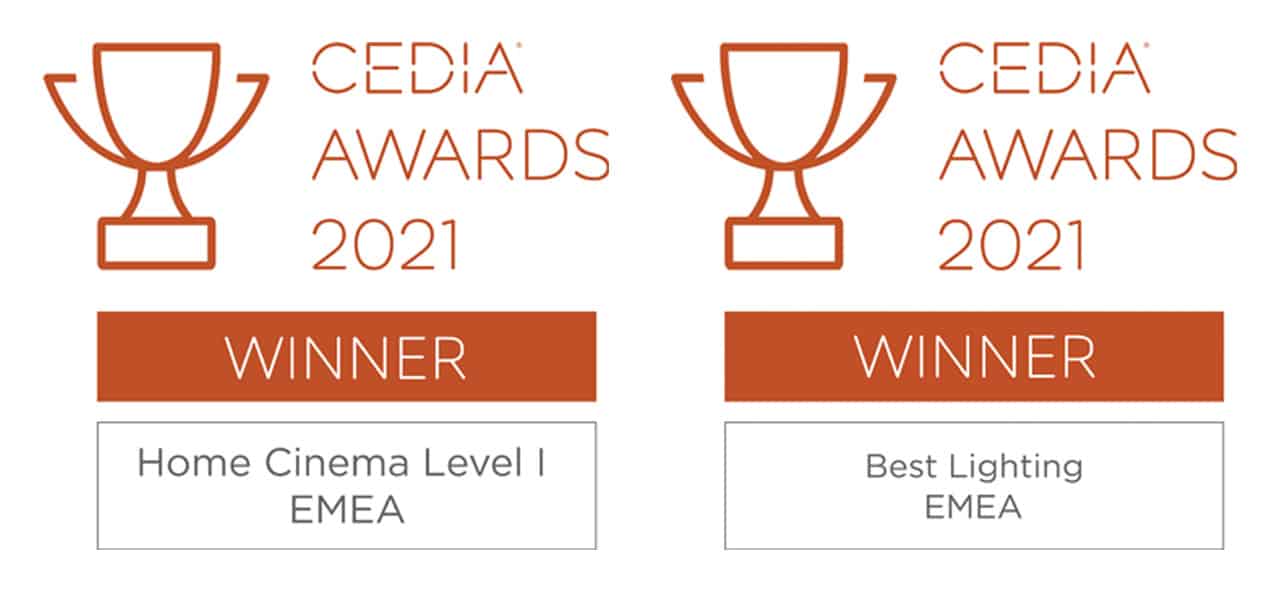
Home cinema video design
Getting Video performance right, is one of the most important aspects of bringing the Cinematic Experience into your home.
Dull washed out images or poor colour accuracy have been banished to the past. Modern Digital Projectors produce sharp, vibrant images with 4K Ultra High Definition resolution.
Display Technology
In a dedicated Home Cinema we would almost always recommend a projector, there is just something very special about the big screen image we remember at the best public cinemas.
Other options are available though, including the latest large screen TV’s which will produce a brighter image, but usually in a much smaller size. When the room is used for watching Movies, Sports, TV and Gaming, a TV and Projector can provide the best of both worlds for Lights on and Lights Off viewing at any time of Day or Night.
The 3rd option is a microLED Cinema Display, which can provide the size of the largest projection screens, with the image brightness and incredible black levels we currently only see in the finest OLED TV’s.
Acoustically Transparent Screens
One of the benefits of using a projector, is the ability to use a screen which reflects light, but passes Audio through unaltered, known as Acoustically Transparent. This is how almost every commercial cinema is designed, with the front speakers placed in a baffle wall behind the screen. This ties the audio to the onscreen action, with dialogue placed directly where the characters are on screen, aiding clarity, intelligibility and 3D audio positioning.
Screen size
The most subjective area of the Cinema Design, there are a range of acceptable screen sizes and we can ensure that the screen is exactly the size to suit your preference from the main seating location.
The screen size is calculated as a viewing angle from the main seating position. During demonstrations, we have a range of screen sizes and seating positions to allow you to find the most comfortable size for you. This will usually match your preferred position at a good public cinema. Using guidelines set by THX and SMPTE, we would advise most clients to consider a range between 62-44 degrees. Having been in hundreds of Cinemas over the last 10 years, the preference across our staff averages 52Degrees. (insert our screen size guide again)
Luminance
The light output from a Projector, OLED TV or MicroLED display are quite different. Each LED can be range from extremely bright to fully off, providing a huge range from bright whites, vibrant colours and perfect inky blacks.
Projectors use a range of light sources including a traditional Lamp, LED and Laser. Projectors usually have less light per square meter than an OLED TV. There are options to improve “lights on” performance such as High Output Lasers and ambient light rejecting screens, but ultimately most projectors will look their best in a light controlled or dark room, as our eyes adjust to the darker room, the large projected image appears brighter.
While we think of Screen sizes in metric measurements (Meters wide), we still generally think of the luminance in an imperial measurement called Foot Lamberts. This is 1 Lumen per Square Foot of screen area, this is measured from the reflection of the screen, rather than direct light output from the Projector. Industry standards suggest to a minimum of 14 ftL in a totally dark room, which is will look similar to many traditional commercial cinemas. With High Dynamic Range content and the latest projector technology clients may often prefer a brighter image in the range of 20-50ftL.
Calibration
Colour accuracy and correct White Balance can massively elevate the image quality from both a TV and Projector.
When White is truly White rather than slightly Blue or Red, other colours have a perfect canvas to shine.
Getting the very best from a display requires an iterative approach. As we get one colour close to perfect, it possible for other colours to drive further away.
By repeating each colour multiple times, we can dial in to the best combined setting for every colour.
We have our own Calibration equipment in house, so we can spend the time required to make sure that your display looks the very best it can.

Once Brightness and Contrast have been set, the most important part of the colour calibration is setting the correct White balance and primary colours. In this projector, A Sim2 Domino 4, we totally removed the cool Blue tone in the White.

We then confirm colour accuracy with a pallet of more complex mixed colours to ensure we are displaying exactly what the director intended. This projector displayed significant errors on both Hue and Saturation across the entire gamut.

After calibration, we see near perfect colour accuracy in the primary & secondary colours, with minimal errors across the gamut. in this example, any remaining divergence from the target colour is now inpercevable to the eye.
